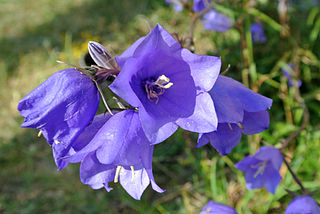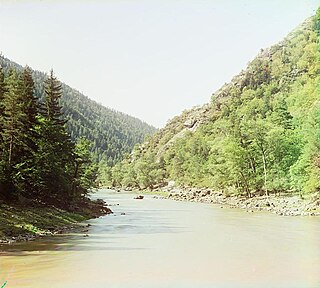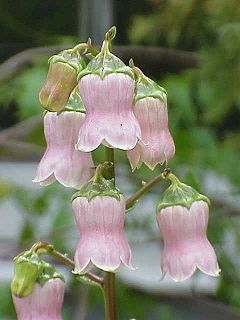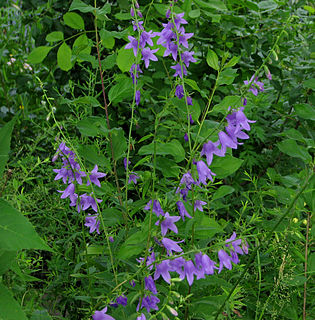
The hammerhead sharks are a group of sharks that form the family Sphyrnidae, so named for the unusual and distinctive structure of their heads, which are flattened and laterally extended into a "hammer" shape called a cephalofoil. Most hammerhead species are placed in the genus Sphyrna, while the winghead shark is placed in its own genus, Eusphyra. Many different, but not necessarily mutually exclusive, functions have been postulated for the cephalofoil, including sensory reception, manoeuvering, and prey manipulation. The cephalofoil gives the shark superior binocular vision and depth perception.

The International Union for Conservation of Nature (IUCN) Red List of Threatened Species, founded in 1964, is the world's most comprehensive inventory of the global conservation status of biological species. It uses a set of precise criteria to evaluate the extinction risk of thousands of species and subspecies. These criteria are relevant to all species and all regions of the world. With its strong scientific base, the IUCN Red List is recognized as the most authoritative guide to the status of biological diversity. A series of Regional Red Lists are produced by countries or organizations, which assess the risk of extinction to species within a political management unit.

Campanula is one of several genera of flowering plants in the family Campanulaceae commonly known as bellflowers. They take both their common and scientific names from the bell-shaped flowers — campanula is Latin for "little bell".

The family Campanulaceae, of the order Asterales, contains nearly 2400 species in 84 genera of herbaceous plants, shrubs, and rarely small trees, often with milky sap. Among them are several familiar garden plants belonging to the genera Campanula (bellflower), Lobelia, and Platycodon (balloonflower). Campanula rapunculus and Codonopsis lanceolata are eaten as vegetables. Lobelia inflata, L. siphilitica and L. tupa and others have been used as medicinal plants. Campanula rapunculoides may be a troublesome weed, particularly in gardens, while Legousia spp. may occur in arable fields.

Campanula americana, the American bellflower, or tall bellflower, is a bellflower native to eastern North America. Tall bellflowers can be annual or biennial with a varying life-history with seeds germinating in the fall producing annual plants and spring-germinating seeds producing biennial plants. Long-tongued bees are the primary pollinators, including Megachile campanulae, but halictid bees, butterflies, and skippers may also act as pollinators. Tall Bellflowers do not generally self-pollinate. Some authorities, including the USDA PLANTS database, consider the name Campanulastrum americanum to be the accepted name for this species.

Campanula carpatica, the tussock bellflower or Carpathian harebell, is a species of flowering plant in the family Campanulaceae.

The Bzyb or Bzipi is one of the two largest rivers of Abkhazia, along with the Kodori and the twelfth longest river in Georgia. The river valley has rich biodiversity of herbaceous garden plants, particularly in the gorge section in the upper reaches where the most prominent and colourful bellflower Campanula mirabilis with profuse growth of 100 flowers per plant is given the name, the "Queen of the Abkhazian flora". During 1904-1917 it served as the border between Russian Empire's Sukhumi Okrug and Black Sea Governorate.

Azorina is a monotypic genus of flowering plants within the family Campanulaceae, whose sole species, Azorina vidalii, the Azores Bellflower, is endemic to the Azores. Its fragmented population is made up of fewer than 1000 mature plants limited to the coastlines of several of the islands. It is also the only species in this family native to the Azores.

Campanula latifolia, the giant bellflower, is a species of bellflower in the family Campanulaceae. It is also known as the large campanula and the wide-leaved bellflower. It is native to Europe and western Asia and is widely grown as an ornamental plant.

Campanula trachelium, the nettle-leaved bellflower, is a species of bellflower. It is a Eurasian blue wildflower native to Denmark and England and now naturalized in southeast Ireland. It is also found southward through much of Europe into Africa.

Campanula rapunculoides, known by the common names creeping bellflower, or rampion bellflower, is a perennial herbaceous plant of the genus Campanula, belonging to the family Campanulaceae. In some parts of North America, it is an extremely invasive species.
Campanula balfourii is a species of flowering plant in the bellflower family Campanulaceae. It is endemic to northeastern Socotra, Yemen. Its natural habitat is subtropical or tropical dry forests.

Campanula gelida is a stenoendemic, critically endangered species of flowering plant in the bellflower family Campanulaceae. It is a perennial species that grows in the mountains of Hrubý Jeseník in the Czech Republic. It evolved through specialization of an isolated population of Campanula scheuchzeri, an Alpine species, which expanded to the area of the Sudetes during a colder period, probably the last ice age. It is closely related to Campanula bohemica, endemic to the Krkonoše Mountains. Sometimes it is even considered its subspecies and referred to as Campanula bohemica subsp. gelida. They all belong to the group of related species Campanula rotundifolia agg.

Campanula robinsiae is a rare species of flowering plant in the bellflower family known by the common names Brooksville bellflower, Robins' bellflower, and Chinsegut bellflower. It is endemic to Florida, where it is known from four or five occurrences in Hernando and Hillsborough Counties. Its population has fluctuated throughout the years; at one point in the early 1980s it was feared extinct. Today there are two populations in Hernando County and probably three in Hillsborough River State Park. At the time the plant was listed as an endangered species of the United States in 1989, it was known from three small populations on wet prairies that were threatened by changes in the local hydrology and by pollution. It was also thought to be threatened by vandalism, trampling, and collecting by flower enthusiasts. Cattle grazing and invasion of the habitat by the exotic skunkvine also degrade the habitat.
Campanula aghrica, the Aghrian bellflower, is a rare flowering plant in the family Campanulaceae. It is native to Turkey and possibly Iran.
Campanula lazica is a species of flowering plant in the bellflower family, Campanulaceae. It is endemic to northeast Anatolia, Turkey.

Campanula tommasiniana, known as the Croatian bellflower or Tommasini bell flower, is a perennial species of flowering plant in the family Campanulaceae. It is native to the alpine regions of Croatia. It has gained the Royal Horticultural Society's Award of Garden Merit as an ornamental.
Campanula seraglio, known as the Serail bellflower, is a species of flowering plant in the family Campanulaceae. It is native to northeastern Turkey.

Campanula troegerae is a species of flowering plant in the bellflower family Campanulaceae. It is native to north-eastern Turkey. It can be found in the provinces of Artvin and Erzurum.















